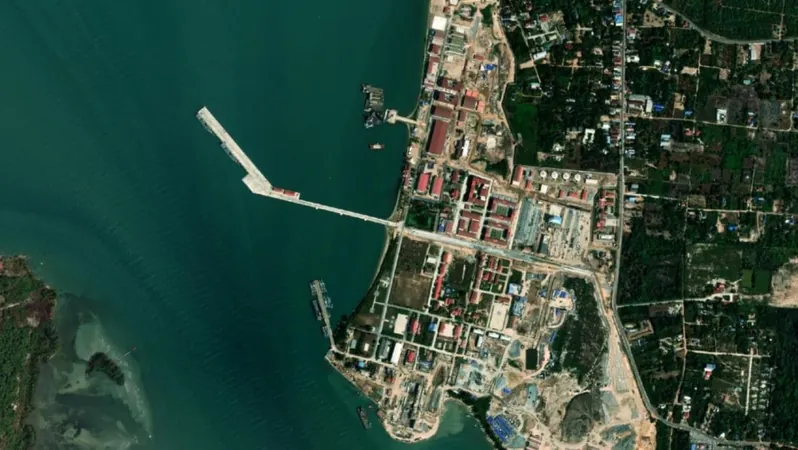
China’s Naval Base in Cambodia: A Game Changer in Southeast Asian Dynamics?
2024-09-24
China’s Naval Base in Cambodia: A Game Changer in Southeast Asian Dynamics?
In recent years, the Ream Naval Base in southern Cambodia has emerged as a focal point of international scrutiny, particularly concerning its relationship with China. The controversy began in 2019 when the Wall Street Journal revealed a purported secret agreement, allegedly allowing the Chinese military exclusive use of the base for a staggering 30 years. This shocking revelation rattled both regional and global powers, raising questions about Cambodia's sovereignty and security dynamics in the region.
Cambodian officials, including Prime Minister Hun Sen, vehemently denied the report, calling it “the worst fake news against Cambodia.” The country’s constitution explicitly prohibits foreign military bases, a fact Hun Sen reinforced in his remarks. Meanwhile, a spokesperson for the Chinese Defense Ministry dismissed the report as "fabricated," insisting that cooperation between China and Cambodia revolves around military training and logistical support, with no intention of targeting any third-party nations.
Fast forward to June 2022, when The Washington Post reported that China was constructing a naval facility at Ream specifically for military use. This facility could potentially become China’s second overseas military installation, following its base in Djibouti. Western sources suggested that both Beijing and Phnom Penh were taking drastic measures to keep this operation under wraps.
In a bid to quell rising apprehensions, a Chinese military official asserted that the Ream base would not be solely designated for Chinese military operations, noting that it could accommodate scientists and researchers as well. Cambodian authorities echoed this sentiment, stating there were no agreements to restrict access to the base exclusively for China, and that visits from other nations, including the United States, would be welcome.
The conversation surrounding access to Ream Naval Base raises broader questions about maritime security in Southeast Asia. Dr. Abdul Rahman from the Lowy Institute pointed out that the practice of granting foreign navies access to local bases is not unprecedented. Vietnam’s long-standing agreement with Russia to utilize military capabilities at Cam Ranh Bay from 1979 to 2002 serves as a notable example, while Singapore’s Changi Naval Base, upgraded in the 1990s to accommodate large vessels, remains a critical point of alliance for the US Navy, as well as for operations involving the Chinese navy.
As Cambodia navigates its ties with China while attempting to maintain its independence, regional dynamics may be increasingly affected. With other nations, particularly the U.S. and its allies, looking closely at developments in Ream, local citizens and regional players alike will be watching how this increasingly complex web of military, political, and economic relationships unfolds. As tensions simmer in the South China Sea and beyond, the question remains—how will the presence of Chinese warships at Ream influence the future stability of Southeast Asia?



 Brasil (PT)
Brasil (PT)
 Canada (EN)
Canada (EN)
 Chile (ES)
Chile (ES)
 España (ES)
España (ES)
 France (FR)
France (FR)
 Hong Kong (EN)
Hong Kong (EN)
 Italia (IT)
Italia (IT)
 日本 (JA)
日本 (JA)
 Magyarország (HU)
Magyarország (HU)
 Norge (NO)
Norge (NO)
 Polska (PL)
Polska (PL)
 Schweiz (DE)
Schweiz (DE)
 Singapore (EN)
Singapore (EN)
 Sverige (SV)
Sverige (SV)
 Suomi (FI)
Suomi (FI)
 Türkiye (TR)
Türkiye (TR)